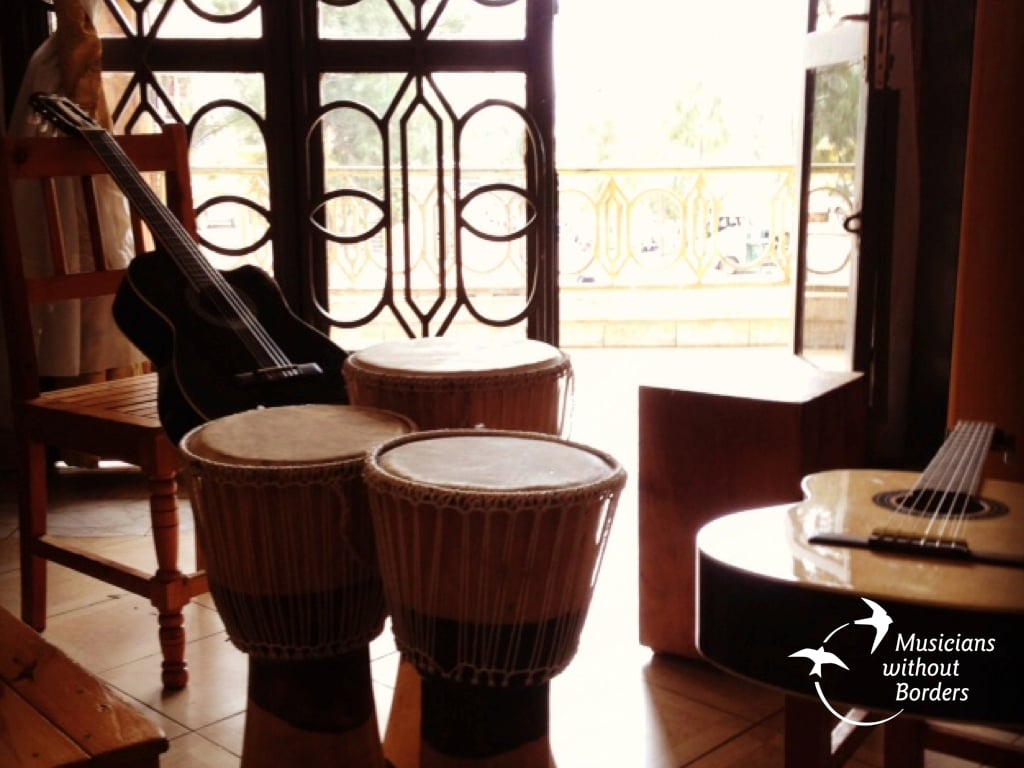by Chris Nicholson
With the frog scraper, you scrape a stick across the instrument’s wooden back and it produces the “ribbit” of a frog. The frog’s carved mouth opens into a hollowed out belly that resonates with a surprisingly loud and convincing sound. Detailed feet and eyes and little nostrils are etched with character, and the triangular spines on its back appear decorative until their musical purpose is revealed. I bought my frog scraper two years ago in Burma, and it was beaten up then; perhaps bruised from centuries of use, or perhaps dropped and damaged that day on the way to market. Either way, it’s captivating in its appearance and musical effectiveness.
Last year I spent six months in Rwanda, working at a clinic for people living with HIV, on placement as a student music therapist. Last week I arrived back, qualified, to spend nine months working at the clinic providing music therapy to adolescent patients. I’ve spent the past ten days reuniting with friends and colleagues, and scheduling the music therapy groups that I will work with. Yesterday I was introduced to a group of young mothers and I explained the possibility of including music therapy in their group’s support.
Everywhere in the world mothers sing to their children. They use lullabies to calm, and they use songs with actions and movements to conjure a smile or a response from their children. In healthy relationships music enables interaction and communication when words aren’t yet understood. Babies gurgle and giggle and scream to communicate their needs, and mothers judge the pitch, tempo and intensity of the sounds to measure their response. In fact it is the tone, rhythm, pitch, volume and melody of sounds and gestures that allow communication between mothers and their babies. So the group of young mothers very quickly understood what music therapy – using music as a means of therapeutic communication and interaction – might mean.
Three members of the group participated in music therapy with me last year, and the instrument they instantly recall is the frog scraper. Yesterday, when asked about the instruments they had played, the three women gestured a scraping action. Fortunately I had the instrument with me – I’ve learnt to carry some instruments even when I’m just being introduced! When I pulled the instrument out of my bag it generated interest. When I played it the women’s eyes lit up with laughter. Quickly it was taken from my hands and was ribbiting around the room.






